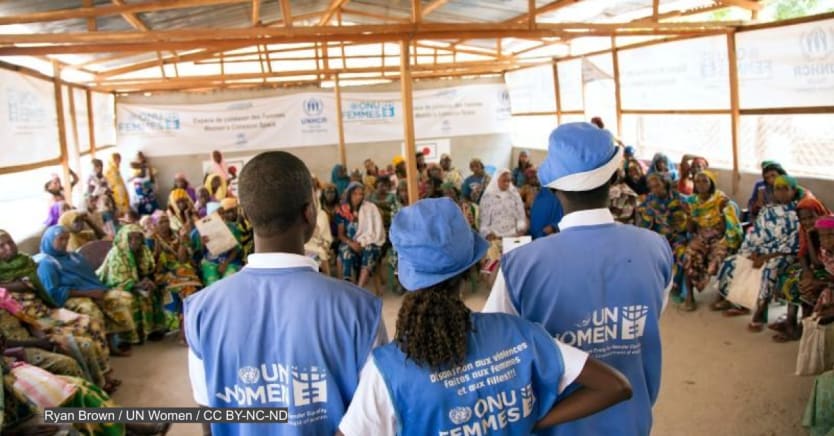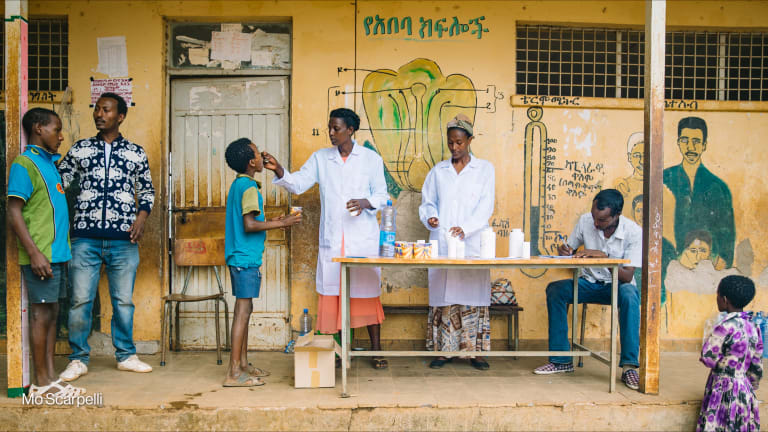
UN Women — in collaboration with the Intersecretariat Working Group on Household Surveys — has released a new digital toolkit, designed to support countries in producing better evidence to inform gender-responsive policies and make gains in achieving gender equity.
The Counted and Visible Toolkit provides recommendations and practical examples for how to utilize existing data from countries to generate gender statistics that are disaggregated, or broken down into subgroups. The idea is that these will allow for more effective policies and programs to be put in place.
“For accelerated change to happen toward achieving gender equality and women's empowerment, you must also change the way you do work on gender equality — meaning as far as gender statistics are concerned, a radical change is needed in terms of producing information that will inform our policymakers and decision-makers,” said Jessamyn Encarnacion, interregional adviser on gender statistics for the Women Count program at UN Women.
She called for countries to find a way to access more high-quality, timely, relevant data that is disaggregated by a range of characteristics.
To “leave no one behind” — a stated aim of the United Nations’ 2030 Agenda for Sustainable Development — the first step is to identify those who are furthest behind, Encarnacion said. “And the key to identifying them is data, data, data,” she added.
Speaking to Devex, Encarnacion explained why disaggregated data is hard to come by, why it is important for understanding intersecting inequalities, and how the toolkit can help.
This conversation has been edited for length and clarity.
How important is it to have disaggregated data when it comes to advancing gender equality?
World leaders, all of us collectively have committed to deliver a just and equitable world for everyone, with the needs of the most disadvantaged addressed as a matter of priority.
To do this, it's important to have disaggregated data. It's not just enough to show averages. ... We're not talking about just looking at the differences between women and men or differences between girls and boys; that's sometimes a limited viewpoint. We also need to look at further disaggregation, overlapping inequality. Sometimes it's even within specific groups of women and girls in a specific area. We must understand that women and girls can be differently affected.
“For accelerated change to happen toward achieving gender equality and women's empowerment, you must also change the way you do work on gender equality.”
— Jessamyn Encarnacion, Women Count interregional adviser on gender statistics, UN WomenUN Women, for example, has conducted at least 55 rapid gender assessment surveys starting in April 2020 to assess the gender impacts of COVID-19 across regions. In Georgia, we looked at various variables — access to information, employment, domestic work, access to basic goods and services — for women who are internally displaced and conflict-affected.
We found that they have an immediate need for trustworthy information on COVID-19. As the results of the survey revealed the immediate need for access to information on COVID-19 by internally displaced and conflict-affected women, the U.K.’s Conflict, Stability and Security Fund implemented a project to specifically address this need.
What are the challenges in acquiring and analyzing such data, and how can these be overcome?
First and foremost is the scarcity of data that’s available. When we deal with disaggregated gender data, we're not just talking about disaggregation by sex but also intersecting inequalities — say, on migratory status and disability. However, often you will find data on these in censuses conducted by national statistical offices, which only happens every 10 years.
Aside from scarcity of data, even if we recognize the need to reduce overlapping inequalities or challenges that women face, the timeliness of data is also a challenge. As mentioned earlier, censuses only happen every 10 years, and most surveys — demographic health surveys, income and expenditure surveys — are conducted every three to five years.
Another challenge is the limited sample sizes. Household surveys are often designed to assess national outcomes, so they’re not often designed to accommodate extensive subgroup analysis — for example, rural women aged 15 to 49 years belonging to the poorest 20% of households. When they are not designed in such a way, we have limited information we can pull out of the survey. And to have sample sizes large enough to do in-depth analysis requires a substantial increase in survey costs.
On the question of how we overcome these, there's always room for us to better utilize existing data. It saves everyone money, time, energy, and resources to do this, especially in a time when data producers face exponentially increasing and competing demands for information.
The Women Count program has been working in Tanzania and, for the first time, produced a gender and Sustainable Development Goal report for Zanzibar. Using the already existing data from labor force surveys, from demographic health surveys, etc., they were able to produce data for at least 50 gender-specific indicators. This provided new gender-sensitive information that can then inform poverty reduction strategies in Zanzibar.
Another strategy is combining data from various data sources. For example, the Philippines merged already existing data from an income and expenditure survey — which would include household level information on income — with individual-level information on labor force participation through the labor force survey. Combining these two data sources, they were able to produce poverty statistics among the basic sectors, including among women, farmers, the urban poor, etc.
How does UN Women’s new toolkit specifically help overcome some of these challenges?
5 stages of the toolkit
Stage 1: Commitment
Outlines the commitment of NSS — national statistical system — leadership to producing disaggregated gender statistics to leave no one behind.
Stage 2: Prioritization
Covers the process of identifying national priority gender equality indicators, or NPGEIs.
Stage 3: Production
Focuses on the development of methodologies and data production of select NPGEIs.
Stage 4: Assessment
Outlines the assessment and publication of results.
Stage 5: Advocacy and use
Specifies the importance of dissemination, advocacy, and use of disaggregated gender statistics.
The Counted and Visible digital toolkit aims to do two things: One is to make use of already existing data from household surveys, and second is to come up with more disaggregated genders statistics using this data. The intention is to make this a practical toolkit. What we need is a one-stop shop of good practices, showing how disaggregated gender statistics have been produced. That's what the toolkit offers.
It is based on country-led initiatives. We wanted this to be a guide for national statistical systems, particularly NSOs [national statistical offices]. We aim to make this practical and useful for them. Hence, we showcased examples from their own peers, from other NSOs that have conducted this activity, shared the same challenges and similar resources, so it's also more relatable.
In terms of the coverage of the toolkit, we covered five stages. The data production process is covered in stages three and four.
What we have also highlighted is making sure that the process of producing inclusive gender data is also inclusive. In stages one and two, we advocate for the chief statistician and the head of the national women's machinery to co-lead this initiative within the national statistical system and jointly identify priority gender data needs, so that in the last and fifth stage, we increase the likelihood of bridging the gap between data production and data use.
What would your call to action be for NGOs and governments around data disaggregation?
We have to make sure that the process is inclusive, meaning it's not only data producers talking to each other but ensuring that the broader national statistical system and the broader gender data ecosystem are part of the discussion. We should also ensure that there's inclusivity in terms of where to look for data to produce disaggregated gender statistics. While the Counted and Visible Toolkit focuses on household surveys, we have to also consider that there are other sources, such as those coming from NGOs and CSOs [civil society organizations].
The Women Count program is guided by the overarching principle of “nothing about us without us.” Thus, in all stages of the toolkit, we underscored the importance of involving everybody, especially those specific subpopulation groups who we are trying to count and make visible. They should have a seat at the table.
Devex, with support from our partner UN Women, is exploring how data is being used to inform policy and advocacy to advance gender equality. Gender data is crucial to make every woman and girl count. Visit the Focus on: Gender Data page for more. Disclaimer: The views in this article do not necessarily represent the views of UN Women.









